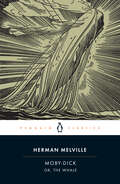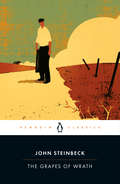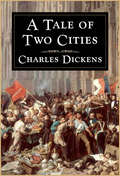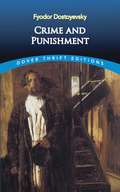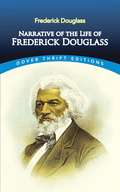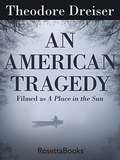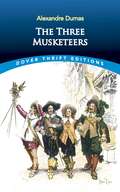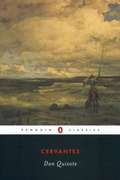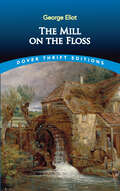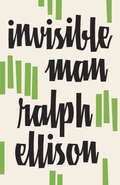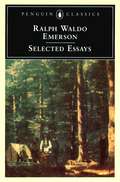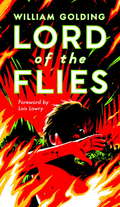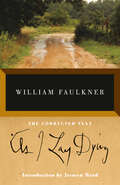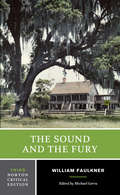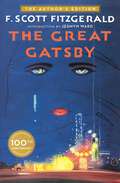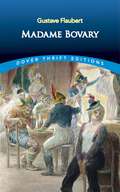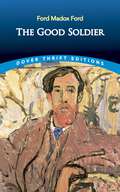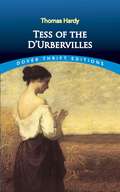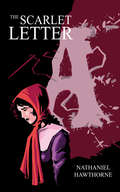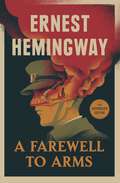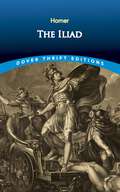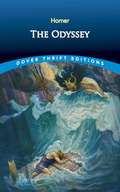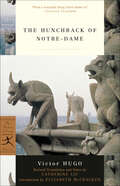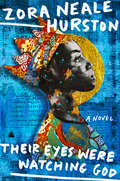Special Collections
College Board's 100 Books for College-Bound Readers
- Table View
- List View
Moby-Dick
by Herman Melville and Nathaniel Philbrick and Andrew Delbanco and Tom QuirkMoby-Dick is one of the great epics in all of literature.
Captain Ahab's hunt for the white whale drives the narrative at a relentless pace, while Ishmael's meditations on whales and whaling, on the sublime indifference of nature, and on the grimy physical details of the extraction of oil provide a reflective counterpoint to the headlong idolatrous quest.
Sometimes read as a terrifying study of monomania or as a critical inquiry into the effects of reducing life to symbols, Moby-Dick also offers colorful and often comic glimpses of life aboard a whaling ship.
For the first time, the authoritative editions of works by American novelists, poets, scholars, and essayists collected in the hardcover volumes of The Library of America are being published singly in a series of handsome paperback books.
A distinguished writer has contributed an introduction for each volume, which also includes a chronology of the author's life an essay on the text, and notes.
The Grapes of Wrath
by John Steinbeck and Robert DemottThe Pulitzer Prize-winning epic of the Great Depression, a book that galvanized--and sometimes outraged--millions of readers.
First published in 1939, Steinbeck's Pulitzer Prize-winning epic of the Great Depression chronicles the Dust Bowl migration of the 1930s and tells the story of one Oklahoma farm family, the Joads-driven from their homestead and forced to travel west to the promised land of California. Out of their trials and their repeated collisions against the hard realities of an America divided into Haves and Have-Nots evolves a drama that is intensely human yet majestic in its scale and moral vision, elemental yet plainspoken, tragic but ultimately stirring in its human dignity.
A portrait of the conflict between the powerful and the powerless, of one man's fierce reaction to injustice, and of one woman's stoical strength, the novel captures the horrors of the Great Depression and probes into the very nature of equality and justice in America.
The Grapes of Wrath summed up its era in the way that Uncle Tom's Cabin summed up the years of slavery before the Civil War. Sensitive to fascist and communist criticism, Steinbeck insisted that "The Battle Hymn of the Republic" be printed in its entirety in the first edition of the book--which takes its title from the first verse: "He is trampling out the vintage where the grapes of wrath are stored." At once a naturalistic epic, captivity narrative, road novel, and transcendental gospel, Steinbeck's powerful landmark novel is perhaps the most American of American Classics.
This edition contains an introduction and notes by Steinbeck scholar Robert Demott.
A Tale of Two Cities
by Charles DickensA Tale of Two Cities (1859) is a novel by Charles Dickens, set in London and Paris before and during the French Revolution.
The novel tells the story of the French Doctor Manette, his 18-year-long imprisonment in the Bastille in Paris and his release to life in London with his daughter Lucie, whom he had never met; Lucie's marriage and the collision between her beloved husband and the people who caused her father's imprisonment; and Monsieur and Madame Defarge, sellers of wine in a poor suburb of Paris.
The story is set against the conditions that led up to the French Revolution and the Reign of Terror.
Crime and Punishment
by Fyodor Dostoyevsky and Constance GarnettThe two years before he wrote Crime and Punishment (1866) had been bad ones for Dostoyevsky.
His wife and brother had died; the magazine he and his brother had started, Epoch, collapsed under its load of debt; and he was threatened with debtor's prison.
With an advance that he managed to wangle for an unwritten novel, he fled to Wiesbaden, hoping to win enough at the roulette table to get himself out of debt.
Instead, he lost all his money; he had to pawn his clothes and beg friends for loans to pay his hotel bill and get back to Russia.
One of his begging letters went to a magazine editor, asking for an advance on yet another unwritten novel -- which he described as Crime and Punishment.
One of the supreme masterpieces of world literature, Crime and Punishment catapulted Dostoyevsky to the forefront of Russian writers and into the ranks of the world's greatest novelists.
Drawing upon experiences from his own prison days, the author recounts in feverish, compelling tones the story of Raskolnikov, an impoverished student tormented by his own nihilism, and the struggle between good and evil.
Believing that he is above the law, and convinced that humanitarian ends justify vile means, he brutally murders an old woman -- a pawnbroker whom he regards as "stupid, ailing, greedy...good for nothing."
Overwhelmed afterwards by feelings of guilt and terror, Raskolnikov confesses to the crime and goes to prison.
There he realizes that happiness and redemption can only be achieved through suffering.
Infused with forceful religious, social, and philosophical elements, the novel was an immediate success. This extraordinary, unforgettable work is reprinted here in the authoritative Constance Garnett translation.
A selection of the Common Core State Standards Initiative.
Narrative of the Life of Frederick Douglass
by Frederick DouglassFormer slave, impassioned abolitionist, brilliant writer, newspaper editor and eloquent orator whose speeches fired the abolitionist cause, Frederick Douglass (1818–1895) led an astounding life. Physical abuse, deprivation and tragedy plagued his early years, yet through sheer force of character he was able to overcome these obstacles to become a leading spokesman for his people.In this, the first and most frequently read of his three autobiographies, Douglass provides graphic descriptions of his childhood and horrifying experiences as a slave as well as a harrowing record of his dramatic escape to the North and eventual freedom.Published in 1845 to quell doubts about his origins — since few slaves of that period could write — the Narrative is admired today for its extraordinary passion, sensitive and vivid descriptions and storytelling power. It belongs in the library of anyone interested in African-American history and the life of one of the country's most courageous and influential champions of civil rights.
An American Tragedy
by Theodore DreiserThis epic of class, ambition, and murder in the early twentieth century is &“[a] masterpiece…America&’s Crime and Punishment&” (Kirkus Reviews). Theodore Dreiser&’s An American Tragedy is the story of a weak-willed young man who is both a villain and a victim of the valueless, materialistic society around him. Inspired by the true story of an early twentieth-century murder and adapted into a classic film under the title A Place in the Sun, An American Tragedy follows Clyde Griffiths as he is drawn into a circle of wealthy friends despite his own poverty-stricken background. Leaving the needs of his family behind as he buys expensive presents to impress a rich girl, Clyde finds that his new life leads him into a tragedy born of recklessness. Yet he continues to yearn ambitiously for money and status—a desire that will be his downfall. &“Dreiser is widely regarded as the strongest of the novelists who have written about America as a business civilization. No one else confronted so directly the sheer intractability of American social life and institutions.&”—The New Yorker
The Three Musketeers
by Alexandre DumasWith its rousing cry of "One for all, and all for one," Alexandre Dumas's thrilling adventure novel has captivated generations of readers since its initial publication in 1844. Action, intrigue, and romance abound in this swashbuckling epic, which traces a country lad's path to the French court of the early 1600s and the glorious fraternity of the king's men, the Musketeers.A son of impoverished nobility, D'Artagnan arrives in Paris to find the Musketeers disbanded by the cunning Cardinal Richelieu, who hopes to seize power from the weak-willed Louis XIII. The daring and ambitious youth proves his mettle in the company of the famous Musketeers — Porthos, Athos, and Aramis — and joins them in a heroic struggle to defend the king and his lovely queen, Anne of Austria.Dumas transformed the concept of the historical novel by writing in a modern, conversational style. His accessible, fast-paced narratives combine real and fictional characters to recapture the events, manners, and mood of seventeenth-century France. Emerging in the chaotic aftermath of the Revolution, Dumas's novels provided his contemporaries with a welcome sense of identity and national pride. His most popular work, The Three Musketeers, continues to charm modern readers with its timeless tales of romantic valor.
Don Quixote
by Miguel de Cervantes Saavedra and Roberto Gonzalez Echevarria and John RutherfordDon Quixote has become so entranced reading tales of chivalry that he decides to turn knight errant himself. In the company of his faithful squire, Sancho Panza, these exploits blossom in all sorts of wonderful ways.
While Quixote's fancy often leads him astray--he tilts at windmills, imagining them to be giants--Sancho acquires cunning and a certain sagacity.
Sane madman and wise fool, they roam the world together-and together they have haunted readers' imaginations for nearly four hundred years.
With its experimental form and literary playfulness, Don Quixote has been generally recognized as the first modern novel.
This Penguin Classics edition, with its beautiful new cover design, includes John Rutherford's masterly translation, which does full justice to the energy and wit of Cervantes's prose, as well as a brilliant critical introduction by Roberto Gonzalez Echevarriá.
The Mill on the Floss
by George EliotMisunderstood Maggie Tulliver is torn. Her rebellious and passionate nature demands expression, while her provincial kin and community expect self-denial.
Based closely on the author's own life, Maggie's story explores the conflicts of love and loyalty and the friction between desire and moral responsibility.
Written in 1860, The Mill on the Floss was published to instant popularity.
An accurate, evocative depiction of English rural life, this compelling narrative features a vivid and realistic cast, headed by one of 19th-century literature's most appealing characters.
Required reading for most students, it ranks prominently among the great Victorian novels.
Invisible Man
by Ralph EllisonInvisible Man is a milestone in American literature, a book that has continued to engage readers since its appearance in 1952.
The nameless narrator of the novel describes growing up in a black community in the South, attending a Negro college from which he is expelled, moving to New York and becoming the chief spokesman of the Harlem branch of "the Brotherhood", and retreating amid violence and confusion to the basement lair of the Invisible Man he imagines himself to be.
The book is a passionate and witty tour de force of style, strongly influenced by T.S. Eliot's The Waste Land, Joyce, and Dostoevsky.
Winner of the National Book Award
Selected Essays
by Ralph Waldo EmersonContains a selection from the essays Johnson published twice weekly as The Rambler in the early 1750s.
It was here that he first created the literary character and forged the distinctive prose style that established him as a public figure.
This volume also includes Johnson's essays from the periodicals The Adventurer and The Idler.
Lord of the Flies
by William Golding and E. L. EpsteinBefore The Hunger Games there was Lord of the Flies
Lord of the Flies remains as provocative today as when it was first published in 1954, igniting passionate debate with its startling, brutal portrait of human nature.
Though critically acclaimed, it was largely ignored upon its initial publication.
Yet soon it became a cult favorite among both students and literary critics who compared it to J.D. Salinger's The Catcher in the Rye in its influence on modern thought and literature.
William Golding's compelling story about a group of very ordinary small boys marooned on a coral island has become a modern classic.
At first it seems as though it is all going to be great fun; but the fun before long becomes furious and life on the island turns into a nightmare of panic and death.
As ordinary standards of behaviour collapse, the whole world the boys know collapses with them--the world of cricket and homework and adventure stories--and another world is revealed beneath, primitive and terrible.
Labeled a parable, an allegory, a myth, a morality tale, a parody, a political treatise, even a vision of the apocalypse, Lord of the Flies has established itself as a true classic.
As I Lay Dying
by William FaulknerA true 20th-century classic from the Nobel Prize-winning author of The Sound and the Fury: the famed harrowing account of the Bundren family&’s odyssey across the Mississippi countryside to bury Addie, their wife and mother. As I Lay Dying is one of the most influential novels in American fiction in structure, style, and drama. Narrated in turn by each of the family members, including Addie herself as well as others, the novel ranges in mood from dark comedy to the deepest pathos. &“I set out deliberately to write a tour-de-force. Before I ever put pen to paper and set down the first word I knew what the last word would be and almost where the last period would fall.&” —William Faulkner on As I Lay Dying This edition reproduces the corrected text of As I Lay Dying as established in 1985 by Noel Polk.
The Sound and the Fury
by William FaulknerWilliam Faulkner's provocative and enigmatic 1929 novel, The Sound and the Fury, is widely acknowledged as one of the most important English-language novels of the twentieth century.
This revised and expanded Norton Critical Edition builds on the strengths of its predecessors while focusing new attention on both the novel's contemporary reception and its rich cultural and historical contexts.
The text for the Third Edition is again that of the corrected text scrupulously prepared by Noel Polk, whose textual note precedes the novel. David Minter's annotations, designed to assist readers with obscure words and allusions, have been retained.
"Contemporary Reception," new to the Third Edition, considers the broad range of reactions to Faulkner's extraordinary novel on publication.
Michael Gorra's headnote sets the stage for assessments by Evelyn Scott, Henry Nash Smith, Clifton P. Fadiman, Dudley Fitts, Richard Hughes, and Edward Crickmay. New materials by Faulkner ("The Writer and His Work") include letters to Malcolm Cowley about The Portable Faulkner and Faulkner's Nobel Prize for Literature address.
"Cultural and Historical Contexts" begins with Michael Gorra's insightful headnote, which is followed by seven seminal considerations--five of them new to the Third Edition--of southern history, literature, and memory.
Together, these works--by C. Vann Woodward, Richard H. King, Richard Gray, William Alexander Percy, Lillian Smith, William James, and Henri Bergson--provide readers with important contexts for understanding the novel.
"Criticism" represents eighty-five years of scholarly engagement with The Sound and the Fury.
New to the Third Edition are essays by Eric Sundquist, Noel Polk, Doreen Fowler, Richard Godden, Stacy Burton, and Maria Truchan-Tataryn. A Chronology of Faulkner's life and work is newly included along with an updated Selected Bibliography.
The Great Gatsby
by F. Scott FitzgeraldThe only edition of the beloved classic that is authorized by Fitzgerald&’s family and from his lifelong publisher. This edition is the enduring original text, updated with the author&’s own revisions, a foreword by his granddaughter, and with a new introduction by National Book Award winner Jesmyn Ward. The Great Gatsby, F. Scott Fitzgerald&’s third book, stands as the supreme achievement of his career. First published by Scribner in 1925, this quintessential novel of the Jazz Age has been acclaimed by generations of readers. The story of the mysteriously wealthy Jay Gatsby and his love for the beautiful Daisy Buchanan is an exquisitely crafted tale of America in the 1920s.
Madame Bovary
by Gustave FlaubertBored and unhappy in a lifeless marriage, Emma Bovary yearns to escape from the dull circumstances of provincial life.
Married to a simple-minded but indulgent country doctor, she takes one lover, then another, hastens her husband's financial ruin with her extravagance, and eventually commits suicide.
Gustave Flaubert (1821-1880) was brought to trial by the French government on the grounds of this novel's alleged immorality, but unlike his less fortunate contemporary, Baudelaire, he narrowly escaped conviction.
Flaubert's powerful and deeply moving examination of the moral degeneration of a middle-class Frenchwoman is universally regarded as one of the landmarks of 19th-century fiction.
It is reproduced here, complete and unabridged, in the classic translation by Eleanor Marx-Aveling, daughter of Karl Marx.
The Good Soldier
by Ford Madox FordLeonora and Edward Ashburnham were "good people" from England, as John Dowell, the narrator of this tale, explains: and Dowell and his wife, Florence -- leisured Americans of solid stock -- were, like their English friends, a "model couple."
For a dozen years, the foursome cultivated and maintained a friendship reinforced with yearly meetings at a fashionable German health resort, which Dowell visited with his "ailing" wife and the Asburnhams traveled to because of Edward's "heart problems."
Their marriages seemed exemplary studies of permanence, stability, and tranquility.
That is, until the day Dowell learned that for the previous nine years his wife had been the mistress of his friend Captain Ashburnham, the apparently honorable "good soldier."
A provocative study of deception and betrayal and of convention and desire, The Good Soldier was also formally innovative.
Along with Ford's Parade's End tetralogy, this powerful novel -- first published in 1915 -- has earned him a reputation as one of the major writers of the 20th century.
Frankenstein
by Charlotte Gordon and Mary ShelleyFor the bicentennial of its first publication, Mary Shelley’s original 1818 text, introduced by National Book Critics Circle award-winner Charlotte Gordon.
2018 marks the bicentennial of Mary Shelley’s seminal novel.
For the first time, Penguin Classics will publish the original 1818 text, which preserves the hard-hitting and politically-charged aspects of Shelley’s original writing, as well as her unflinching wit and strong female voice.
This edition also emphasizes Shelley’s relationship with her mother—trailblazing feminist Mary Wollstonecraft, who penned A Vindication of the Rights of Woman—and demonstrates her commitment to carrying forward her mother’s ideals, placing her in the context of a feminist legacy rather than the sole female in the company of male poets, including Percy Shelley and Lord Byron.
This edition includes a new introduction and suggestions for further reading by National Book Critics Circle award-winner and Shelley expert Charlotte Gordon, literary excerpts and reviews selected by Gordon, and a chronology and essay by preeminent Shelley scholar Charles E. Robinson.
Tess of the D'Urbervilles
by Thomas HardyThe ne'er-do-well sire of a starving brood suddenly discovers a family connection to the aristocracy, and his selfish scheme to capitalize on their wealth sets a fateful plot in motion. Jack Durbeyfield dispatches his gentle daughter Tess to the home of their noble kin, anticipating a lucrative match between the lovely girl and a titled cousin. Innocent Tess finds the path of the d'Urberville estate paved with ruin in this gripping tale of the inevitability of fate and the tragic nature of existence.Subtitled A Pure Woman Faithfully Presented, Thomas Hardy's sympathetic portrait of a blameless young woman's destruction first appeared in 1891. Its powerful indictment of Victorian hypocrisy, along with its unconventional focus on the rural lower class and its direct treatment of sexuality and religion, raised a ferocious public outcry. Tess of the D'Ubervilles is Hardy's penultimate novel; the pressures of critical infamy shortly afterward drove the author to abandon the genre in favor of poetry. Like his fictional heroine, the artist fell victim to a rigidly oppressive moral code. Today, Tess is regarded as Hardy's masterpiece, embodying all of the most profoundly moving elements of its creator's dark vision. No perspective on 19th-century fiction is complete without a consideration of this compelling tale, now available in an inexpensive and high-quality edition.
The Scarlet Letter
by Nathaniel HawthorneNathaniel Hawthorne's classic American novel The Scarlet Letter follows Hester Prynne, a woman living in the rigid Puritan society of 17th century Boston.
Condemned as an adulteress and forced to wear a scarlet A on her dress, Hester refuses to name the father of her child, born out of wedlock.
Her quiet dignity in the face of persecution only serves to further enrage many of the townspeople.
Separated from society, Hester begins to ask questions about the nature of sin and redemption and comes to conclusions unthinkable to her fellow Puritans.
A story of perseverance in the face of ignorance and injustice, The Scarlet Letter enjoyed immediate and lasting success.
A Farewell to Arms
by Ernest HemingwayThe best American novel to emerge from World War I, A Farewell to Arms is the unforgettable story of an American ambulance driver on the Italian front and his passion for a beautiful English nurse.
Hemingway's frank portrayal of the love between Lieutenant Henry and Catherine Barkley, caught in the inexorable sweep of war, glows with an intensity unrivaled in modern literature, while his description of the German attack on Caporetto--of lines of fired men marching in the rain, hungry, weary, and demoralized--is one of the greatest moments in literary history.
A story of love and pain, of loyalty and desertion, A Farewell to Arms, written when he was thirty years old, represents a new romanticism for Hemingway.
[This text is listed as an example that meets Common Core Standards in English language arts in grades 11-12 at http://www.corestandards.org.]
The Iliad
by HomerProbably composed in the eighth century B.C. and based on an actual historical event of the thirteenth century B.C., Homer's Iliad is one of the great epics of the Western world.
The poem unfolds near the end of the ten-year-long Trojan War, detailing the quarrel between the great warrior-hero Achilles and King Agamemnon, the battle between Paris and Menelaus for Helen of Troy, the Greek assault on the city and the Trojan counterattacks, the intervention of the gods on the part of their favorites, and numerous other incidents and events.
Vast in scope, possessing extraordinary lyricism and poignancy, this time-honored masterpiece brilliantly conveys the inconsistencies of gods and men, the tumultuous intensity of conflict, and the devastation that results from war.
This inexpensive edition reproduces the celebrated Samuel Butler prose translation, admired for its simple, unadorned style, clarity, and readability.
The Odyssey
by HomerThis excellent prose translation of Homer's epic poem of the 9th century BC recounts one of Western civilization's most glorious tales, a treasury of Greek folklore and myth that maintains an ageless appeal for modern readers.
A cornerstone of Western literature, The Odyssey narrates the path of a fascinatingly complex hero through a world of wonders and danger-filled adventure.
After ten bloody years of fighting in the Trojan War, the intrepid Odysseus heads homeward, little imagining that it will take another ten years of desperate struggle to reclaim his kingdom and family.
The wily hero circumvents the wrath of the sea god Poseidon and triumphs over an incredible array of obstacles, assisted by his patron goddess Athene and his own prodigious guile.
From a literal descent into Hell to interrogate a dead prophet to a sojourn in the earthly paradise of the Lotus-eaters, the gripping narrative traverses the mythological world of ancient Greece to introduce an unforgettable cast of characters: one-eyed giants known as Cyclopses, the enchantress Circe, cannibals, sirens, the twin perils of Scylla and Charybdis, and a fantastic assortment of other creatures.Remarkably modern in its skillful use of flashbacks and parallel line of action, Homer's monumental work is now available in this inexpensive, high-quality edition sure to be prized by students, teachers, and all who love the great myths and legends of the ancient world.
A selection of the Common Core State Standards Initiative.
The Hunchback of Notre-Dame
by Victor Hugo and Elizabeth Mccracken and Catherine LiuThe story and characters in Victor Hugo's The Hunchback of Notre-Dame have resonated with succeeding generations since its publication in 1831.
It has tempted filmmakers, and most recently animators, who have exploited its dramatic content to good effect but have inevitably lost some of the grays that make the original text so compelling.
From Victor Hugo's flamboyant imagination came Quasimodo, the grotesque bell ringer; La Esmeralda, the sensuous gypsy dancer; and the haunted archdeacon Claude Frollo. Hugo set his epic tale in the Paris of 1482 under Louis XI and meticulously re-created the day-to-day life of its highest and lowest inhabitants. Written at a time of perennial political upheaval in France, The Hunchback of Notre-Dame is the product of an emerging democratic sensibility and prefigures the teeming masterpiece Les Misérables, which Hugo would write thirty years later. He made the cathedral the centerpiece of the novel and called it Notre-Dame de Paris. (It received its popular English title at the time of its second translation in 1833.)
Hugo wrote that his inspiration came from a carving of the word "fatality" in Greek that he had found in the cathedral. The inscription had been eradicated by the time the book was published, and Hugo feared that Notre-Dame's Gothic splendor might soon be lost to the contemporary fad for tearing down old buildings. Notre-Dame has survived as one of the great monuments of Paris, and Hugo's novel is a fitting celebration of it, a popular classic that is proving to be just as enduring.
Their Eyes Were Watching God
by Zora Neale HurstonJanie is an independent African American woman who grows up with a grandmother who is determined to keep her from the sexual and racial violence of her own past.
Janie's first marriage is filled with hard labor, so she runs off with Joe, a handsome and wealthy storekeeper.
Joe becomes mayor of the all-black town of Eatonville, Florida, but Janie is still unfulfilled by her new relationship.
After Joe's death, she lives with another man who brings passion into her world, if not stability.
Soon tragedy strikes and Janie learns to face it head-on with optimism and strength.
[This text is listed as an example that meets Common Core Standards in English language arts in grades 11-12 at http://www.corestandards.org.]
